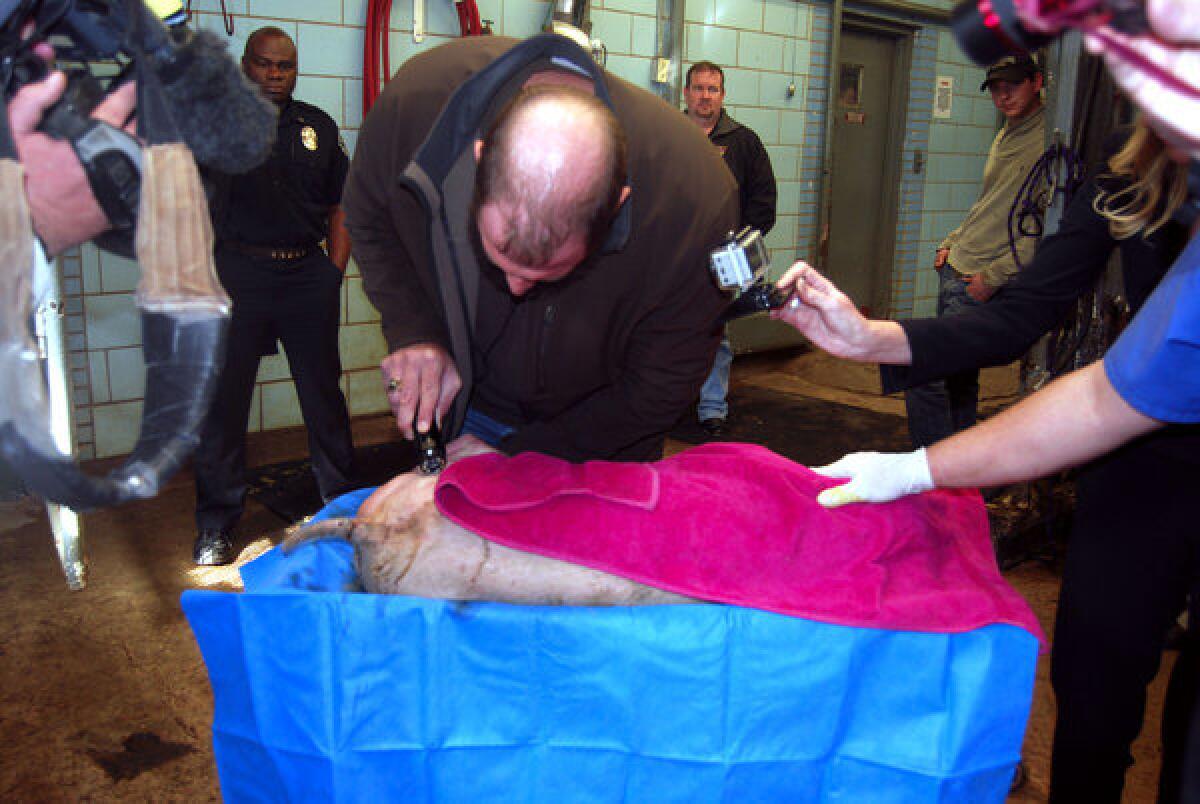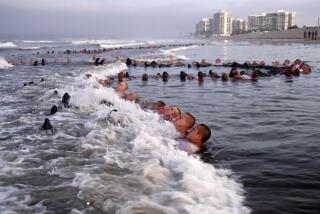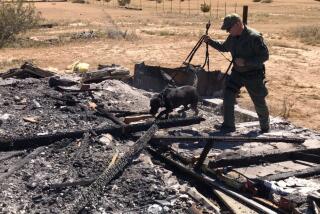Stunning a pig in a quest for answers to Navy seaman’s death

- Share via
ELGIN, Texas — Before he shot the pig with a million volts of electricity, James Culp bowed his head in prayer.
“Dear heavenly father, I ask you to guide my hand and render this test successful. Thank you for the justice that’s brought me here,” Culp said as he applied a brutal shock to the anesthetized pig, which even in sleep began to quiver, its flesh sizzling.
The Texas military defense lawyer’s aim was to prove that Navy Seaman Kyle Antonacci, whose 2010 death in an Illinois barracks was preliminarily called a suicide, actually had been hit with a stun gun, then strangled.
A story in the Los Angeles Times explores the tangled investigation, which only now is winding up, in which Antonacci’s friends and family have sought answers.
A key part of the quest unfolded in January at a small veterinary clinic in Elgin, where officers of the Texas Rangers and the Illinois State Police looked on while Culp attempted to reproduce the small, dark marks found on Antonacci’s back and side — marks that hadn’t even been mentioned in the original autopsy.
Photos of that part of the body taken during the autopsy “vanished,” according to the coroner’s report.
The surreal scene involved a stun gun whose prongs appeared to match the marks on the young seaman’s body exactly. So violent was the attempted reproduction that the pig gasped and shook even while unconscious, and veterinarian Gary Warner stepped in to halt it.
“We’re going to call this enough!” Warner said, pushing his way to the examination table.
“I’m sorry it was so brutal. But as brutal as it was, we need to remember that this is what Kyle Antonacci went through in the moments before he died,” Culp said.
Did he? Naval Criminal Investigative Service agents found substantial evidence that Antonacci was distraught in the days before he died, that he talked of killing himself and that he even searched for information about suicide on his computer.
But Antonacci’s friends and family weren’t the only ones who had questions. The former civilian coroner who originally looked at the case now believes those were indeed stun-gun marks on the seaman’s body. And the Navy-Marine Corps Court of Criminal Appeals ruled there were many things still unexplained, including a bloody fingerprint on the wall, ligature marks inconsistent with how the seaman’s body was found, and Antonacci’s bloody nose, among others.
The appeals court also wanted to know why the NCIS hadn’t officially reported that Antonacci was quietly working as an informant for the agency in the hours before his death.
“They got him killed,” Culp said. “And instead of taking responsibility for it, they saddled the family with an alleged suicide story.”
ALSO:
Kansas latest state poised to restrict abortion
Woman leads prayer at major Mormon conference
Fish on board set adrift by Japan tsunami land in U.S.
More to Read
Sign up for Essential California
The most important California stories and recommendations in your inbox every morning.
You may occasionally receive promotional content from the Los Angeles Times.










